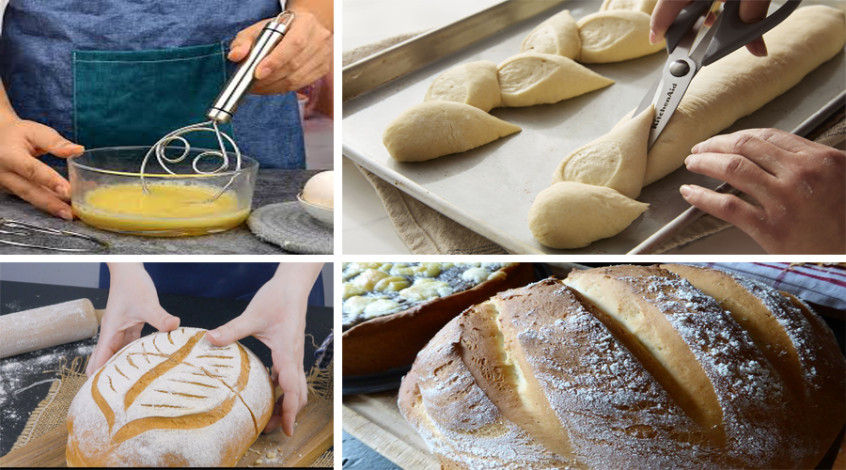
Learning to make great sourdough bread comes with many challenges. And scoring bread successfully was surprisingly one of the hardest parts for me to get right. It was also the most nerve-wracking part of the whole bread process because if you get it wrong, you can’t undo it! But once you learn a few handy tips, it’s not too difficult to learn to score your bread dough like a professional baker.
Here are 7 steps to scoring bread dough successfully:
* You’ll need an extremely sharp blade.
* Make slashes to the dough swiftly; with confidence and authority.
* Don’t press down on the bread dough. Instead, let the blade do the work.
* Score the dough using your whole arm, not your wrist.
* Wet your blade with water or spray it with oil so that you get smooth cuts rather than ragged ones, mainly if the dough is sticky.
* Cold dough is easier to score, so chill it before scoring.
* Once your loaf is scored, bake it right away. Otherwise, it will start to deflate.
The tips above will give you a great head start to scoring your bread dough successfully, but let’s take a deeper look into a few fundamental techniques to get you slashing like a master baker. But firstly, do we score bread just to make it look good or is there a bigger purpose?
The Purpose of Scoring Bread
Scoring bread describes cuts made to bread dough before the dough is placed in the oven and baked. The cuts or the scoring of the bread dough are made with two purposes in mind:
1. To control the way the bread expands in the oven
2. To control the way the loaf will look
Why Do We Need to Control the Way Dough Expands in the Oven?
When baking bread, the intense heat of an oven causes the dough to rise rapidly by expediting the fermentation process. Through the production of gasses, the dough is forced to spring up and push against the taut surface formed during the shaping and proofing stage.
Whether intentional or not, the weakest points in the dough surface will give way and burst open. Bread bakers score dough to create these weak spots and direct the expansion of the loaf. In other words, wherever you slash or make cuts in the dough will be the places where the dough is able to expand out.
Without this step in the baking process, our loaf will burst open in unexpected areas. Some home bakers don’t mind these irregular openings, but scoring is the way to go if you want maximum height in a consistent and controlled manner.
The second purpose of scoring bread is aesthetics…
Who hasn’t been drawn to a beautifully presented loaf of bread with its dramatic, surface ear or intricate pattern? It’s here where the baker can leave his/her individual touch on the final baked loaf. Some bakers opt for a single, long slash, whereas others prefer lots of tiny cuts that together form a beautiful, artistic design.
View details.
Source:
Online/GFMM
Comment Now